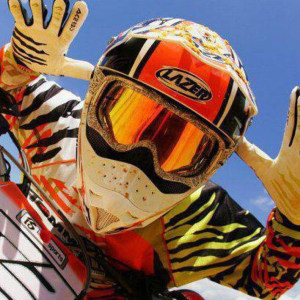"Maxxis Tires" – Classic Ink #68 "Supercross Partners"

Today at 07:53 PM
For this edition of Classic Ink, we are going to take a look back at some of the partners Supercross has had over its fifty year history.
In the early days of Supercross the series was much more of a hodgepodge of individual promotors than a unified front. Here in New Orleans, you had a local Louisiana restaurant by the name of Popeyes sponsoring the event in 1978.
Since 2007, Monster Energy has been the title sponsor of AMA Supercross. The iconic claw logo has become synonymous with the sport and the two brands have only grown in popularity over the last seventeen years. With such a long and fruitful partnership, it can be hard to remember a time before Monster dominated the sport, but for its first thirty years Supercross entertained a revolving door of title sponsors.
One Supercross sponsor that has stood the test of time is Toyota. Today's trucks are certainly more capable, but I really miss the inexpensive mini trucks of this era.
In the early days of the sport, the series was far less organized and individual promotors had separate deals throughout the country. As time went on, however, the series began to get more organized, and you saw partnerships with major companies like Toyota, Wrangler, Coors, and Camel. All these brands saw the value in reaching Supercross' young active demo and were happy to put sponsorship money into the sport.
For a brief time in the early eighties Wrangler jeans were the title sponsor of the AMA Supercross series.
Today, the most well-remembered of these partnerships is probably Camel, who was the title sponsor during one of the sport's most exciting eras. Today, cigarette ads are persona non grata, but if you opened a magazine prior to the mid 1990s they were everywhere. Today, it is jarring to open a copy of Dirt Rider or Cycle World from the eighties and see an ad for Camel or Marlboro, but back then it was perfectly normal.
Say what you will about Joe Camel, I do think the Camel ads were way more effective than this ridiculous picture of Jeff Ward and Mark Barnett cheering who knows what in 1983.
By the 1980s, the dangers of cigarette use were well established and unlike previous eras, it was probably unlikely that any of the top athletes were smoking them, but that did not stop R.J. Reynolds from slapping Joe Camel on the back of Dirt Rider with Jeff Ward and Jeff Stanton. For Camel, it was a great partnership, with their yellow and blue logo becoming synonymous with one of the coolest sports in the world. Riders who had absolutely no intention of ever smoking a cigarette emblazoned their machines with Camel Supercross logos to look just a bit like Stanton and Ward.
The late eighties saw Coors come on as a series sponsor.
Unfortunately for Camel, however, those cute cartoony Joe Camel ads would prove to be their undoing. Consumer advocacy groups already up in arms about the dangers of cigarette use saw the Joe Camel character as a blatant appeal to children. One study in 1991 found that Joe Camel was as recognizable to six-year-olds as Micky Mouse, and this put R.J. Reynolds in the crosshairs of the Federal Trade Commission.
Miss Coors and Jeff Ward – ah, who didn't love the 1980s? Photo Credit: Moto Verte
In 1995, R.J. Reynolds pulled out of Supercross, ending one of the most iconic eras in the sport. Camel only sponsored Supercross for six seasons but they remain some of the most impactful and well-remembered in the sport's history. Camel Supercross saw the end of the Rick Johnson era, the rise of Stanton, the antics of Damon Bradshaw, the enigma of Jean-Michel Bayle, and the beginning of the McGrath legend. It was a great time for Supercross and an excellent time to be sponsoring the sport.
Health policy and politics aside, this is just a great ad for Supercross and Camel.
Eventually, pressure from the FTC would lead R.J. Reynolds to pull its ads and in 1997, the character of Joe Camel was officially retired for good. EA Sports, THQ, and Amp'd Mobil would all take turns as the Series' title sponsors before the beginning of the Monster era, but none of them would prove to have the cultural footprint of the six-year Camel run. The late eighties and early nineties were a unique time in so many ways, and the Camel era of Supercross will always hold a special place in the hearts of those of us who were lucky enough to experience it first-hand.
Looking at these ads, it is not hard to see how R.J. Reynolds attracted the ire of the FTC. As a teenager at the time, these Joe Camel ads were far more memorable and appealing to me than the typical Marlboro Man ads found in most mainstream magazines of the time.


